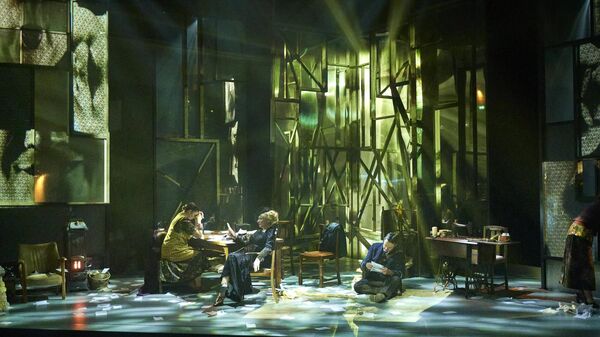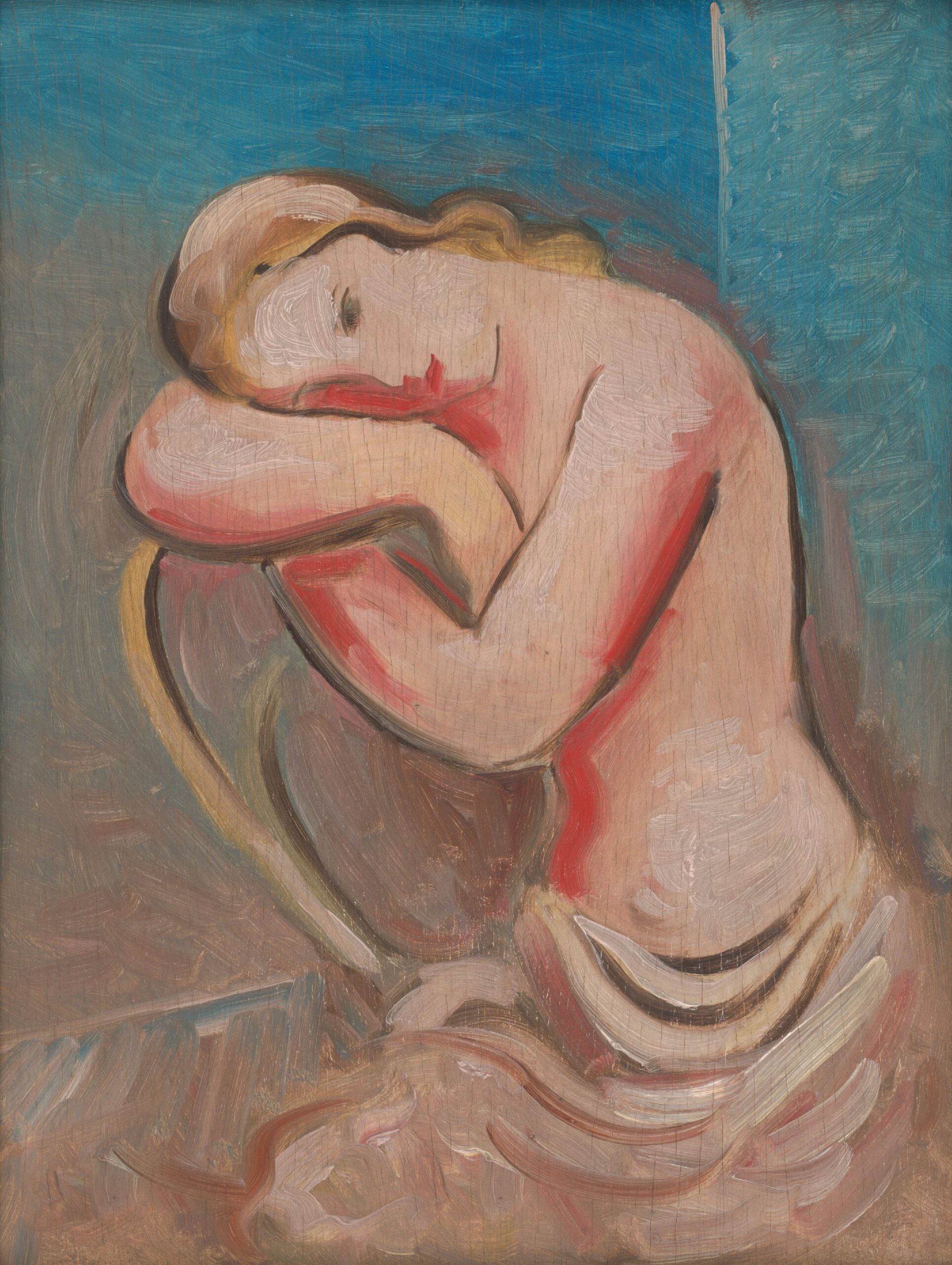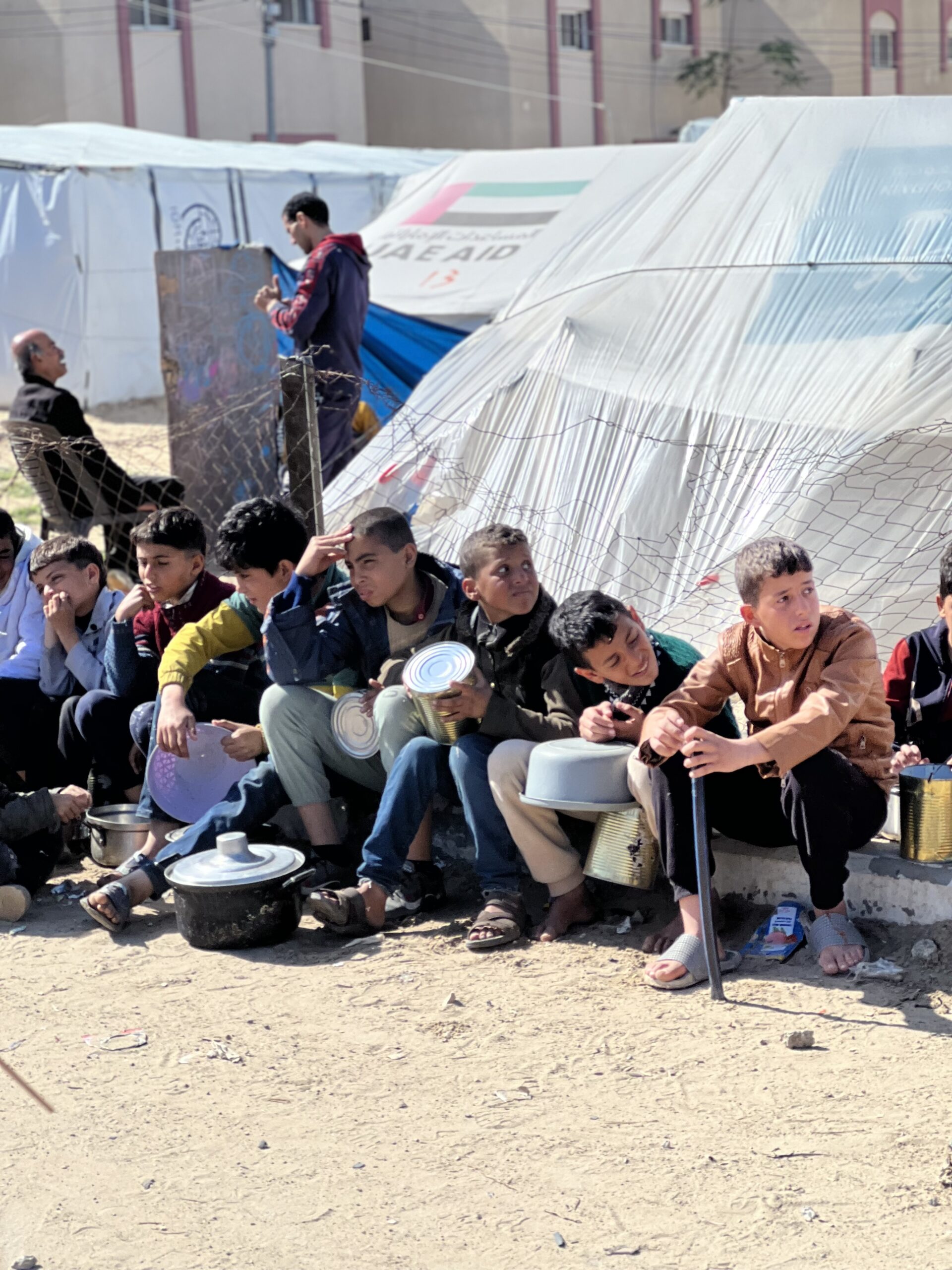
As part of this year’s Dublin Theatre Festival, the Abbey Theatre has produced Joyce’s Women to the backdrop of the centenary since the publication of Ulysses. Through the production, writer Edna O’Brien seeks to portray the canonical Joyce through the women that surround and shaped him. In an attempt to give these women a voice, the audience is left acutely aware of the muting and the imposing impact his figure had on them.
The play follows Joyce, via his relationships with the women in his life, from his youthful Stephen Dedalus phase, seeking to escape his oppressive home island, to his death bed in Zurich. The retracing of Joyce’s life takes place in Zurich, circa 1941, in the Joyce family home as Stephen Hogan’s adaptation of the author lies dying in hospital. The opening scene effectively foreshadows the ensuing play, as the ghost of Joyce’s mother curses him for his ill-considered actions. The so-called curse or burden in this play, however, doesn’t fall on Joyce himself: rather, it permeates and damages the women who he interacted with.
The production was a tarantella of sorts – fanatic and upbeat, yet still plagued by its folky origins. The do-no-wrong and heralded image of Joyce is retained. The portrayal of Nora Joyce (Bríd Ní Neachtain) paints her as an infatuated country bumpkin who fell under the spell of Joyce. Even the fact that she is referred to as Nora Joyce in the cast list is an unusual one; there is no Nora Barnacle in this play. The ramifications of the Joyce name have gone as far as to claim her own surname from her. She is able to forgive and forget his vices, wrongdoings and flaws. Love for her beloved Jim is stronger than any of his misdoings, no matter how numerous they are.
The representation of Lucia Joyce, the beloved daughter turned psychopath, was fantastically carried by Genevieve Hulme Beaman. Her slow descent into madness, no doubt aided by the lacklustre parenting of Joyce, is a key plot line. This is a disturbing analysis of an oftentimes overlooked facet of Joyce’s life. His affection and admiration for his daughter are evident but rather than nurture and assist her, she is exiled. An act which Joyce himself was more than accustomed to, crucially, Lucia’s exile was not self-imposed. Rather, she is dragged and forced into an institution and thereby becomes another one of Joyce’s victims.
O’Briens grappling with Joyce’s women at times comes across as her own attempt to understand Joyce himself. This is of course a noble quest. Her knowledge and respect for the revered writer are clearly evident. Let us not forget that this is one of Ireland’s greatest living writers and scholars recounting probably our greatest. One writer describing a fellow writer. Quotations and snippets from all of Joyce’s media which scatter the production are a testament to this. Each tastefully placed and no doubt carefully deliberated upon.
Yet, in the attempt to understand the women she sought to develop, they oftentimes become caged in their own role fulfilment as muses for Joyce: the lunatic yet loving daughter, devotee patron, adoring wife, mistress and mother. As O’Brien has explained, “Joyce had been my ultimate hero for sixty years”. This is evident. I wonder if the use of the word had here is of importance. Did O’Brien unearth the scathing and deeply troublesome relationship Joyce had with the women in his life? I don’t think so. She may not have unearthed it but she definitely allows it to begin to come to the surface.
It’s said that you should never meet your hero. O’Brien was tasked with setting up a meeting between the viewer and her hero, Joyce. Her chosen materials are the women in Joyce’s life. Rather than choose a brutally realistic style, she opted for a more abstract romanticised one, one that dances around the severe issue this production set out to solve. Her lofty goal to rectify his relationship with women seems like a futile and fatal pursuit. The language of Joyce and O’Brien simultaneously merged leaving the canvas blurred. Yet it was this which I enjoyed about the play: the blurry abstract final product left room for meaning to be added or taken away from this impressionistic sketch.
Joyce’s genius and talent are unmatched, yet his promiscuity and prejudices are left in the wings. Admittedly no genius nor great is perfect; Joyce was a notorious womaniser, frequenter of brothels, a heavy drinker and a flawed father and husband. Joyce’s Women omits the large shadow these flaws may cast. What could have been an opportunity to uncover the women who formed Joyce and who Joyce in turn formed, or even harmed, was only a glimpse into the underbelly of the unexamined Joycean macrocosm. If Joyce is to remain on the pedestal on which he has been placed upon, the shadow that this casts must be examined. This is the aim of O’Brien’s production.
As Joyce wrote “first we feel then we fall” in Finnegan’s Wake, this production quite possibly is the kindling of a feeling. A feeling to challenge the authority of Joyce. Yet I’m certain that Joyce and his legacy won’t be falling anytime soon, if ever. His canon and impact will no doubt outlast this. That said the legacy of Joyce may have to check its footing as it continues to develop into the 21st century, this production being a starting point for this. At one stage in the play, a chorus of Dublin voices chants out, “who owns Joyce?”. This is arguably a debate for another day but the inverse of this is a more probing question: who does Joyce own? According to O’Brien, whether intended or not, his prime casualties and dominions were the women in his life.
The final line of the play, “we have made our legend and will stick to it”, exulted by Nora as she affirms her devotion to her husband, stating she would choose him over all the men in Ireland. It does beg the question, what is the legend of Joyce today? How can we come to terms with his legacy whilst noting the trail of destruction it left behind? Like every legend, there are myths, fallacies and bravado attached to them. This production is an intriguing attempt to classify and demystify the female influences on the man behind the literary figure. The Jim behind the James Joyce.
Joyce’s Women runs until October 15th as part of the Dublin Theatre Festival.






